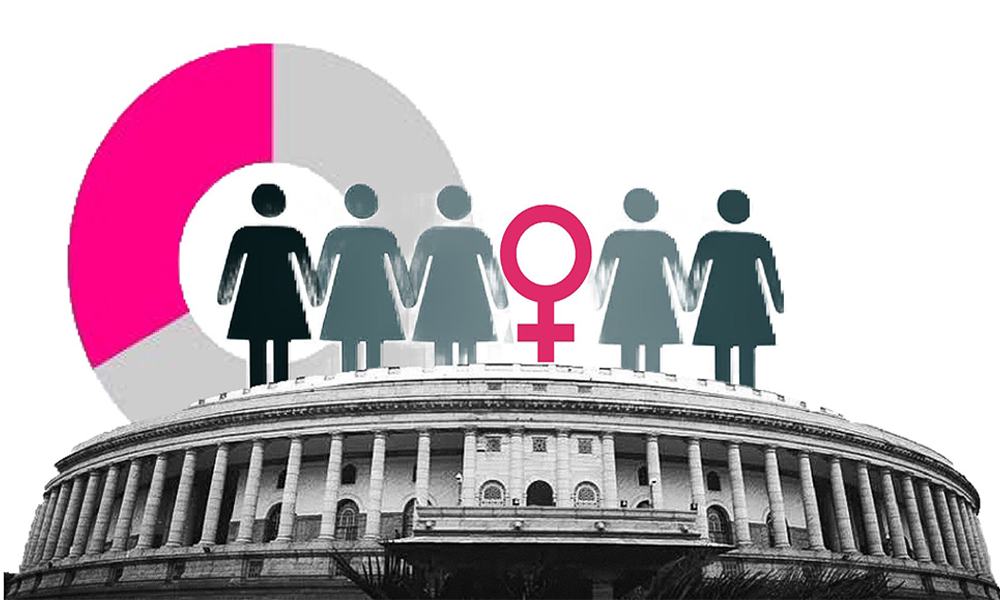Role of Women and Women’s Organization, Population and Associated Issues, Poverty and Developmental issues, Urbanization, their problems and their remedies.
Parliament and State Legislatures—Structure, Functioning, Conduct of Business, Powers & Privileges and Issues Arising out of these
India has a long-standing problem with women’s reservation in legislative bodies. Critically examine the country’s political representation of women in relation to other nations.
As of April 2024, India ranks 143 in the list of countries in the ‘Monthly ranking of women in national parliaments’ published by the Inter-Parliamentary Union, a global organisation for national parliaments.
What about women representatives in independent India?
- India as a sovereign republic provided the right to vote for all its women right from the first general elections in 1952. While the right to vote was provided to all women since the commencement of the Constitution, the representation of women in the Lok Sabha and State legislative assemblies has been far from satisfactory.
- The percentage of women MPs in the Lok Sabha had been very low between 5% and 10% till 2004. It rose marginally to 12% in 2014 and currently stands at 14% in the 18th Lok Sabha. The representation in State Legislative Assemblies is even poorer with the national average being around 9%.
Reservation in local bodies:
The 73rd and 74th amendments of the Constitution in 1992/1993, provided for one-third reservation for women in panchayats and municipalities. However, attempts between 1996 and 2008 to provide similar reservation in the Lok Sabha and assemblies were unsuccessful.
Countries with women’s political representation:
- In the recently concluded general elections in the U.K., a record 263 women MPs (40%) have been elected to the House of Commons. The South African National Assembly has around 45% women representation, while the U.S. House of Representatives has 29%.
- Universal suffrage was achieved in various parts of the world after prolonged political movements. New Zealand as a self-governing unit under British rule was the first to grant universal women suffrage in 1893. The U.K., itself provided all its women the right to vote only in 1928. The U.S., granted equal voting rights through the nineteenth amendment only in 1920.
- Countries like Bangladesh and Pakistan that have quotas in parliament fare poorer than countries with political party quotas.
- The important methods used across the world to ensure higher representation of women are (a) voluntary or legislated compulsory quotas for candidates within political parties and (b) quota in parliament through reservation of seats.
- Quotas within political parties provide more democratic choice to voters and allow flexibility to parties in choosing women candidates.
- Opponents of having a reserved quota in parliament for women argue that it would be seen as women not competing on merit. As the seats reserved for women would be rotated after each delimitation, it may also reduce the incentive for MPs to work hard to nurture their constituencies.
Way forward:
Implementation 106th amendment act: Provided for one-third reservation of seats for women in the Lok Sabha and State legislative assemblies. This would ensure a fair representation of women in legislatures that would increase gender sensitivity in parliamentary processes and legislation. It would also hopefully increase the number of women Ministers in the Centre and States.
Speedy Delimitation exercise: This reservation shall come into effect based on the delimitation exercise after the relevant figures of the first Census conducted after the commencement of this act is published. Hence, the Census which is overdue since 2021 should be conducted without any further delay to ensure that this reservation is implemented starting with the general elections in 2029.

